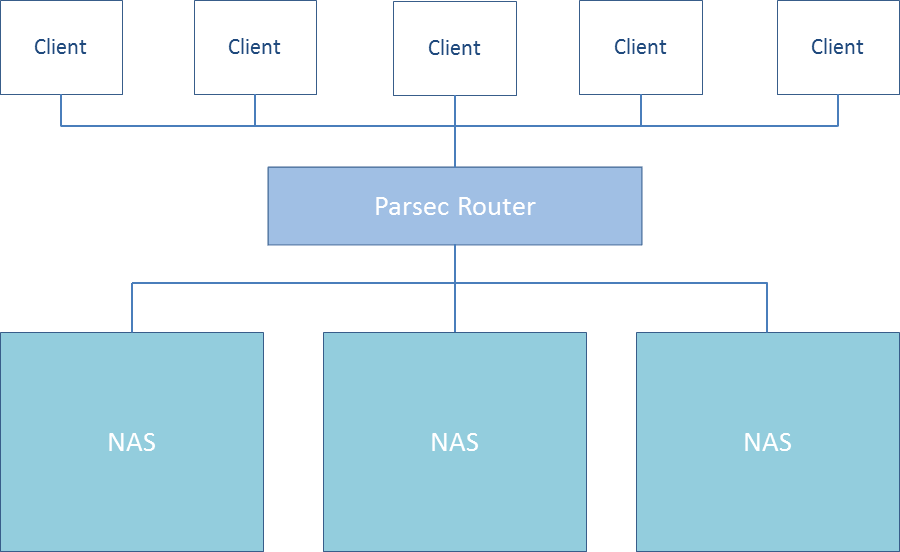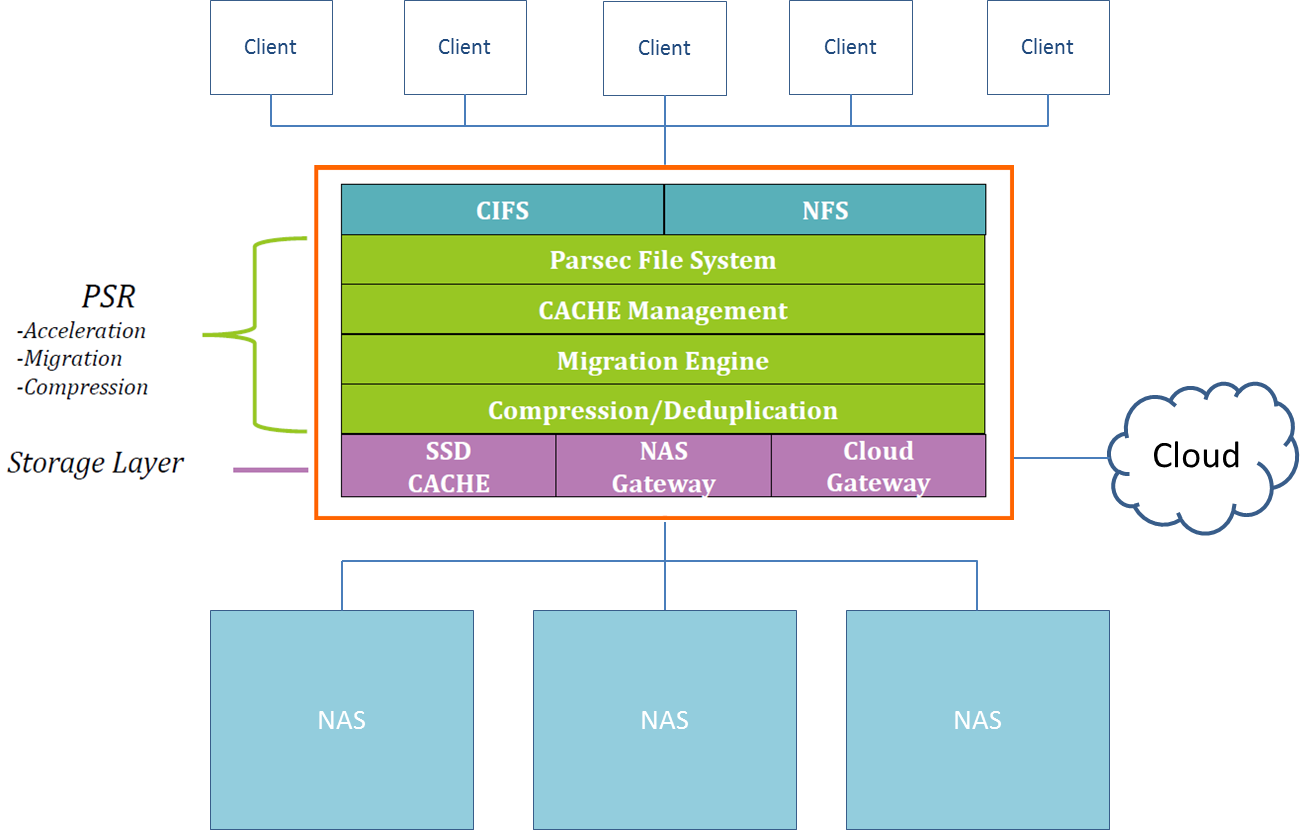 Parsec Labs, interview with Walter Angerer
Parsec Labs, interview with Walter Angerer
Date: 6 November 2013
Parsec Labs website
CEO Series
As a part of a larger series, I am interviewing CEOs that lead companies in the field of Storage, Virtualization and Networking. What developments in the market did they see that inspired them to build their company? How will the market develop from here? These questions are on most of our minds, and I am keen on asking leaders in the industry for their views.
Parsec Labs
Innovation in the NAS market has focused on performance acceleration through usage of SSD technology. For an SMB customer, migrating to a larger and faster NAS represents a large capital investment and migrating data from the old to the new NAS is a painful process.
Parsec Labs targets the SMB market with a Storage router that sits between your NAS systems and your clients. The storage router accelerates performance with its SSD layer and adds de-duplication and compression technology to leverage your existing NAS storage capacity.

Secondly, they add a migration engine that is able to migrate data live and they provide their customers with a cloud backend to allow them to migrate data off-premise. Parsec Labs pricing policy is based on a monthly fee that covers the storage router plus support on the hardware and software.
The company was founded in april 2013, funded by Toba Capital. Parsec Labs aim to launch their Alpha product by January 2014 and have their product commercially available at the end of Q1 2014. Walter’s background in storage comes from his time at Symantec and Quest.
I interviewed Walter Angerer to find out about the company and how they position the product.
How did the positioning of your product come about?
 When we launched Parsec we looked at the storage market and realized that there was an opportunity to go into the NAS market and drive some innovation there. The idea to focus specifically on SMB customers came into existing after we did our competitor analysis and we came up with this being the sweet spot. From there we developed our thoughts into concrete plans for the storage router. That whole process took about three weeks, after which we started designing and building the storage router.
When we launched Parsec we looked at the storage market and realized that there was an opportunity to go into the NAS market and drive some innovation there. The idea to focus specifically on SMB customers came into existing after we did our competitor analysis and we came up with this being the sweet spot. From there we developed our thoughts into concrete plans for the storage router. That whole process took about three weeks, after which we started designing and building the storage router.
We decided we wanted to look into the NAS market because first of all it has a large penetration and second it still has problems that are of interest. The third thing that got us really excited is that the technology is so much more simple than block attached storage.
The first opportunity we saw in the market is that NAS vendors have gone in the direction of inclusing SSDs to make the NAS go faster, but many SMB customers might not be in the position to make the capital investment required. The second opportunity is to look at extending the life of the NAS you have, beyond accelerating the performance. We looked at deduplication and compression to leverage the existing storage capacity.
The third and maybe most prominent proposition is data migration. That is a large problem we think no one has adressed yet. Sooner or later your NAS device will fill up. After talking to some customers we realized this is one of the most painful and costly processes. It takes a lot of costly hours to move all these terrabytes of data and a lot of downtime as well. The storage router we provide takes care of this in a way that it virtualizes the namespace, so that from the client it looks like the data sits where you left it.
Beneath it is a migration engine that moves the data to where it needs to go. It actually does this on a block level, it chops the file up in small blocks and goes to the blocks that have no IO to it and moves those. You do not have to close any application while this process takes place.
When you put that all together, the Parsec Storage Router allows you to reduce the storage needs via our deduplication and compression, you can have the full performance benefit of SSD technology without having to upgrade your device, and we built a product that allows for smooth data migration.

The last part is that we provide a cloud backend with our product. The idea behind that is; you will at one day run out of space and we allow you make decisions about what part you want to move to the cloud and what do you want on high performing local storage.
The way we licence this, is we offer a monthly fee to our customers. Depending on how much data you’re managing, we will provide different versions of our Parsec Storage Router and adjust the monthly fee in accordance. As our customers grow, we can replace the storage router and change the subscription fee. For the customer there is no worrying about lock-in or being stuck with the wrong storage router.
How about redundancy?
Good point. Since we are coming out in the SMB market we are simply coming out with the right box that has the appropriate size for your environment. In the next release we will introduce replication between devices. In terms of clustering or hot standby, we have to build on experience with our customers but for now we do not really see the need for it in the SMB market.
What we do provide from day one is a virtual machine image of the software that is running inside the router, so that if the router is somehow unavailable you can still acces your data. We will make the VA available for any hypervisor you might have, whether it is VMware, Hyper-V or other hypervisors.
Of course you will then lose the SSD acceleration but we will be able to ship you a new box in 24 hours. We want to keep it simple for SMBs, it is not a technical issue. Rather it is more about keeping it simple and inexpensive. Looking at the SMB market this seems like the right approach.
What are your main competitors?
We have no real competitors, the only company with similar technology that I know of is Avere. They deal with NAS virtualization as well, but the main differences are that they do not provide the backend ontion and monthly fee option, and they focus more on enterprise. So I believe in terms of the SMB market we are after, we offer a unique value proposition.
Your company has just started, In 2014 the Alpha product should be ready, what is the roadmap from there?
In january we will send our storage router to 20-30 customers to allow them to give feedback. Depending on how the Alpha goes, we could be ready to start shipping our product at the end of Q! 2014.
How large is the company?
We have two locations, Minnesota and Silicon valley. We have 2 people in the valley and 4 people in Minnesota, with 2 more people starting in Minnesota so we are growing to 8 people now.
What is your go to market strategy?
Assuming Alpha is going well, the product is going to be available from Q1 next year. In the early stages we are going for a direct sales model, Marketing, lead generation and follow up. We will engage the Channel at some point, but I do not believe it will be easy to engage channel partners early on. In my experience it is very difficult to get traction with partners if you do not have some recognition in the market and we are working on that the coming time!
A last question I wanted to ask. Have you cloned yourself, to work for both Parsec Labs and Toba Capital?
(laughs) Yeah this is interesting. Toba Capital is a Vinny Smith company, and we are differentiating ourselves by making sure that the partners in the firm are not only doing venture capital business and sitting on board positions – most of the partners have a CEO position at the same time.
One of the things we bring to the table is operational experience, instead of just flying in a few times a year to review the data. So each of the partners are dividing our time between managing our companies which is our primary task, and managing our portfolio companies. That means the partners limit themselves to 3 to 5 companies they are managing at the same time.
update – I interviewed Steve Goodman of Toba Capital, the article can be found here!
Background and links
Geef een reactie